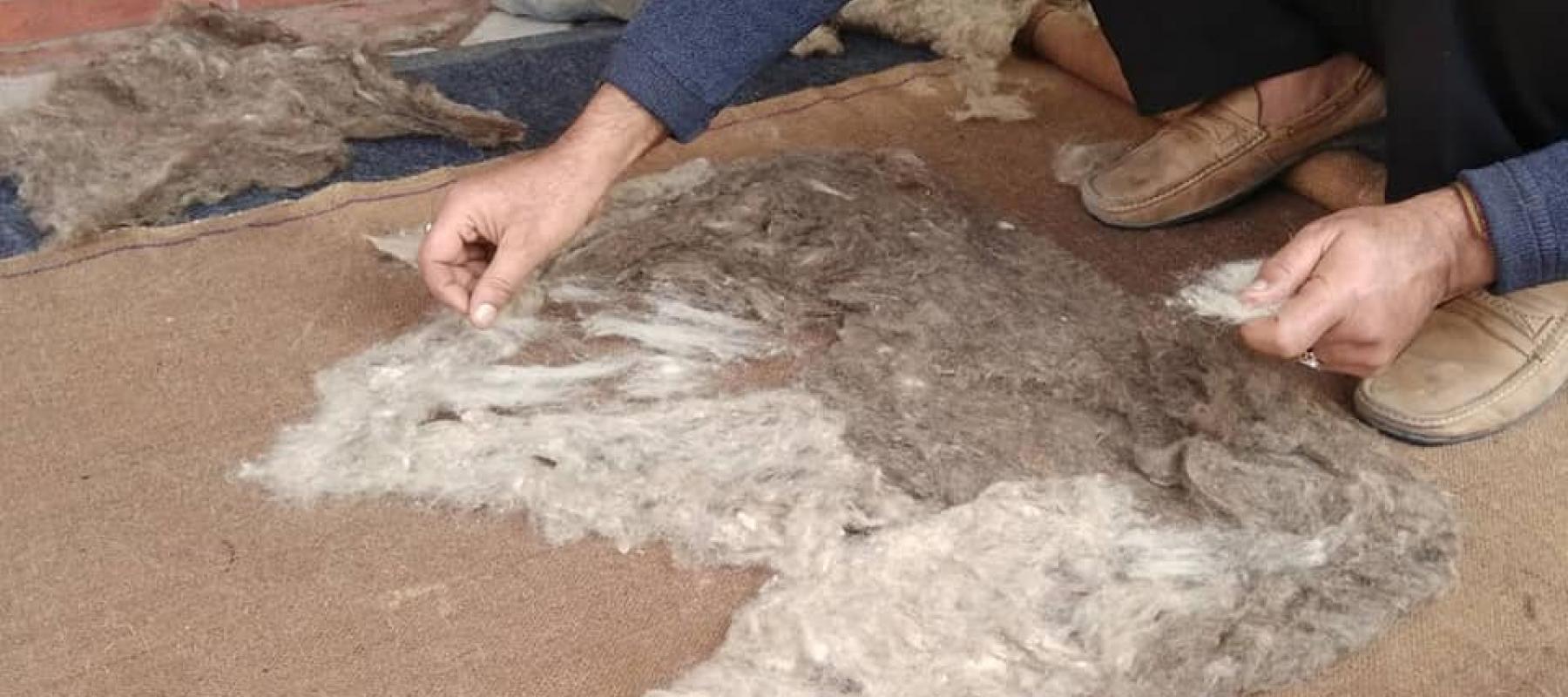Namda is the craft of creating felted woolen rugs. It is a dying art form but organisations like Commitment to Kashmir give us hope that it will once again flood the marketplace and cover several household floors.
Innumerable artists have found their muse in the crown of our country: Kashmir. The valley is home to various crafts, each passed down from generation to generation. However, various factors like modernisation of technology and poor marketing have brought several crafts to the brink of extinction.
While the pashmina shawls and the wood work of Kashmir have secured a safe position in the marketplace, crafts like namda and calico painting remain neglected. With technological advancements giving way to mass production and diversification, the namda rug struggles to survive. Considering the fight against industrial manufacturing, low wages, change in consumer preferences, and cumbersome labour, the future of this craft looks precarious.
The history of the namda rug goes back to the eleventh century when a man named Nubi created a felted covering for Akbar's ill horse. The rugs are made from the wool of indigenous sheep in Kashmir which is felted not woven, giving it a unique texture.
The felting process begins by enmeshing layers of evenly laid, clean wool fibers with the help of moisture, soap and mechanical pressure, often applied with a tool called pinjra. The sheet is rolled up against a jute mat and is moved in a to and fro motion. It is further tied up to squeeze out the excess moisture. The rug is rolled for hours till it is sturdy enough. Finally, the carpet is embellished either by patches of coloured felted wool or with Kashmiri aari embroidery.
Having survived the test of time, namda craft now needs a little help in the face of adversity. The craft is undoubtedly in danger of extinction—the market poses a threat to it and the artisans are wandering off for better wages.
‘The situation of the craft was so bad at one point that I had to leave it. I was not happy and soon, I came back to it. It helped me feed my brothers and sisters and hence, I have immense love for the craft,’ says Mr Farooq Ahmad Khan who is a craftsman who has been associated with namda since he was a young boy. The respect and commitment that he has for the art form is unquestionable. This love, however, does not translate into the opportunity to train a successor.
The craftsmen community is dwindling, as their daily wage of Rs 300 is inadequate. Considering that the minimum wage is Rs 500 per day, which is earned by doing meager manual labor. Everyone is on the lookout for a better wage, a better life. Mr Khan understands this and hence, refuses to train his successors till there is a significant change in wage rate.
However, he remains hopeful for the future which explains his involvement with Commitment to Kashmir (CtoK). CtoK has been working relentlessly to uplift and restore Kashmir’s endangered craft sector. Mr Khan is currently working with Ms Gunjan Jain, a designer who is helping him modernise designs to make them more marketable. She has helped the craft take many forms—toys, apparel, bags and accessories such as tea cosies.
Another innovation that has been attempted by the institution is a technique called nuno felting, which blends silk and wool fibres. It is a skill practiced in Australia and is very similar to the namda-making process; however, while namda depends on the laborious method of hand rolling, nuno felting’s use of a rolling machine (a recent invention by Mr. Zufa Iqbal) increases productivity tremendously.Hand rolling allows two people to make one 4x6 rug in a day, whereas the rolling machine produces the same rug within half an hour. Ms Gunjan, at one point, was hesitant about explaining the new technique to the namda artisans who have always worked with their hands. She was reassured when Mr Khan said, ‘kuch naya seekne ki umar nahi hoti’ (there is no set age to learn something new).
‘I don't have to worry about transportation anymore, I feel like I can go anywhere with my craft, travel to my heart's content,’ says Mr Khan, who can now take the once cumbersome craft to cities all across the country. He is truly grateful to Commitment to Kashmir and their Wool Felting Revival Project, and says that the organisation has helped cover 75 per cent of his costs. The journey of revamping crafts for the modern marketspace needs an extensive course of action, but fortunately, the process has begun.
Image credits- Commitment to Kashmir
To know more about Commitment to Kashmir and their work log on to their website- https://www.ctok.org.in/

